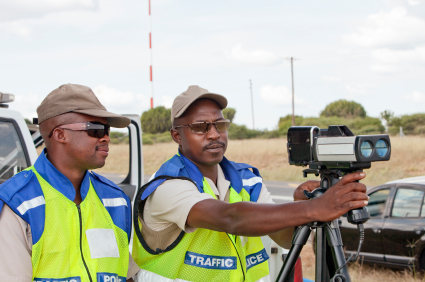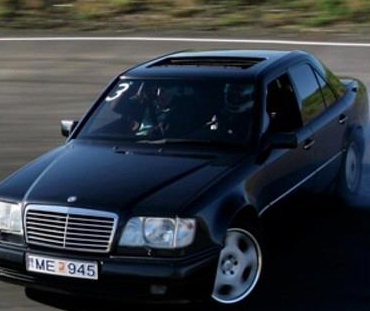It isn’t unusual to think of breath alcohol testing as a very local issue. However, it is amazing how international both the scientific and even legal aspects of breath alcohol testing have become.
South Africa is a beautiful land with mountains, grasslands, oceans, forests, deserts and vast mineral wealth. A country of meerkats, wild dogs, elephants, lions and giraffes, and as in most other countries – of drinking drivers. In the following test case brought to the High Court in South Africa (Western Cape High Court, Cape Town), in the matter between the State vs Clifford Joseph Hendricks, Erasmus, J ruled mainly on the scientific reliability of BrAC testing and the Alcotest 7110 Mk III evidential breath testing instrument. Although this case was decided in far-off South Africa, it also has great relevance to BrAC testing conducted in the US, Canada and other countries.
Case Outline
On January 23rd 2010 (a warm sunny day in Cape Town!), the accused drove to the beach with his girlfriend and his daughter and consumed alcoholic beverages. The accused was seen later that day driving erratically, at one time passing a police vehicle on the wrong side of the road. As a result, the driver was taken to the police station where it was discovered that the police did not have the necessary blood sampling kit. In addition, the forensic lab required several months to issue a toxicology report which had become a problem for successful, timely prosecution.
The driver was tested, therefore, on an Alcotest 7110 Mk III (an EC/IR instrument) and provided one breath test with a result of 0.95 milligrams of alcohol per 1000 millilitres of breath (BAC equivalent of 0.200 g/100mL). The legal limit in South Africa is 0.24 milligrams of alcohol per 1000 millilitres of breath (BAC equivalent of 0.050 g/100 mL).
Effects of Alcohol on Driving
I thought the judge summarized the effects of alcohol on driving ability quite nicely;
“Driving requires the simultaneous and rapid use of various basic skills ranging from perception and judgment through decision-making and finally to physical reaction. When a driver has had too much to drink, that driver’s ability to effectively co-ordinate these processes is negatively impacted.”
The various effects of alcohol on the driving task were then listed as:
-
Limited ability to judge distances – between both stationary and moving objects
-
Difficulty in maintaining a constant speed – and, therefore, a steady following distance
-
Difficulty in maintaining a direct path of travel – frequently deviating from it and then compensating therefor
-
A reduced ability to observe surroundings – which would include traffic signs and signals, other vehicles as well as pedestrians
-
Increased inability to react timeously and take corrective or evasive action
Scientific Aspects
The main defense position was that there is no correlation between blood and breath alcohol levels and, therefore, it is arbitrary and unreasonable. The defense used the “new” paradigm of Hlastala (2010) regarding the interaction of the alcohol concentration of the exhaled breath with the mucosa of the respiratory tract, to discredit breath alcohol testing. The judge cited one of my published papers (I think perhaps somewhat sarcastically) about this “new” paradigm:
“James G. Wigmore B S – vide Journal of Forensic Sciences January 2011 volume 56, number 1, page 266 – comments on the Hlastala paper and points out that the term ‘should probably be more accurately described as a model refinement…[since]the interaction of breath alcohol with the mucosal surfaces of the respiratory passages has been know since at least 1964′.”
The judge also cited that this issue was raised in other jurisdictions such as New Jersey (State v Chun), Ontario (R vs Powichrowski) and Alberta (R vs Duff) and dismissed the new paradigm. He further stated:
“It has been historically accepted that the contravention of blood alcohol concentrations above a certain limit is rational. As I have shown above a direct correlation between arterial blood and breath has been scientifically established. The correlation is sufficiently related so that similar inferences which are drawn from blood alcohol could be drawn from breath alcohol – subject to necessary safeguards…”
Interestingly, I testified as the forensic toxicologist in the case of R vs Duff. My valued colleague Dr. Robert Langille of the Centre of Forensic Sciences testified on R vs Powichrowski.
Technical/Procedural Deficiencies
The judge then compared the operation and procedures of the Alcotest 7110 Mk III as described in State v Chun to that in South Africa (SA) and found various deficiencies in the SA breath test program such as
-
Only a single breath test was conducted in SA (which increases the risk of a mouth alcohol effect)
-
No maintenance or calibration records were kept in this case
-
No truncation of breath test result was conducted in SA
-
The Alcotest 7110 Mk III used in SA was minimally equipped and programmed compare to NJ
In addition, he found that the operator was poorly trained and was not shown to have been trained on this particular type of instrument with the particular type of software.
Conclusion
Due to the technical/procedural deficiencies in the BrAC testing of the driver, the judge dismissed the charges. It seems that the most effective defense challenges to breath alcohol testing have not been on fundamental scientific issues (e.g. Supreme Court of Canada, and State v Chun) but on the procedural and technical aspects of the individual breath alcohol testing program.
The detailed and extensive (75 page) written judgment of Erasmus, J in the matter of S v Hendricks can be obtained here.
International Perspectives
To learn more about how international perspectives are shaping the world of forensic alcohol toxicology and courtroom outcomes, be sure to join us at the upcoming Forensic Success Summit!





